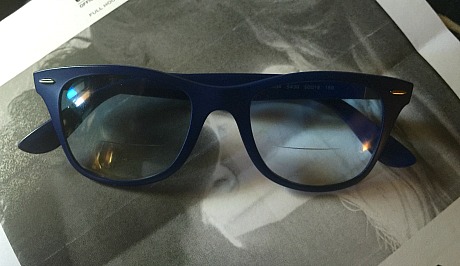Last night around 7:30 pm I experienced something close to a spiritual revelation, except it arrived in purely visual terms. I’d bought a pair of Warby Parker prescription reading glasses two or three months ago, but they were too good in that regard as they made everything outside of whatever I was reading look blurry. So yesterday I bought a pair of tinted bifocals. Almost as an afterthought the guys at Lens Crafters had tested my long-distance vision, which I’d never had a problem with. Everything five or 100 feet or a block or two away had always looked clear enough, I thought. Then I put these babies on last night…heavens! Everything outside my immediate reading realm was suddenly razor sharp. It was like I was suddenly living in a Lucy in the Sky realm in which everything outside of my 18-inch sphere was crystal clear and focused with an Alexa 65 lens by Emmanuel Lubezski. In fact my distance vision had softened a bit over the years but I just hadn’t noticed it. Quite a change.


